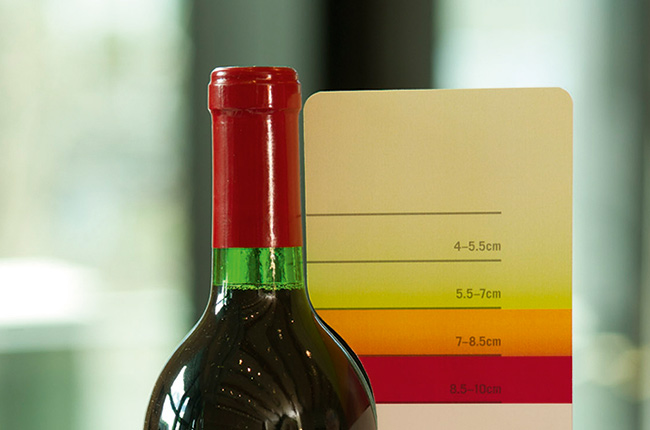Ullage in wine: How important is it? – ask Decanter
The ullage – sometimes known as the fill level or the headspace – is the gap between the cork in the bottle and the wine itself.
‘Producers aim for fill levels of 3-10mm at the time of bottling. Over time, some wine will be lost through cork absorption and evaporation,’ said Dirceu Vianna Junior MW, in a response in the August 2020 Decanter‘s Notes and Queries pages.
It is one of the key things that wine buyers should look for, particularly in more mature vintages. Buyers for auction houses, for example, will pay close attention to ullage as part of their assessment of the wine’s health.
‘It’s the best guide you have to the condition of a bottle of wine, especially if you don’t know for certain how it’s been stored,’ said Matt Walls, DWWA regional chair for Rhône, speaking to Decanter.com in 2018.
‘The ullage level can give you a few clues about your wine before you have the opportunity to open the bottle,’ said Julia Sewell, sommelier at The Fat Duck and judge at DWWA.
‘Bottle age aside, ullage lower than midshoulder level poses a much higher risk of spoilage,’ said Junior.
‘Abnormally low fill levels indicate poor storage conditions, namely high temperature or low humidity. Long-term storage requires a temperature of around 13°- 15°C, a humidity level of 70% or so, and an absence of light and vibration.’
Find Matt Walls’ Rhône 2018 en primeur report on Decanter Premium.
Older bottles
‘The fill level of a bottle of wine (along with seepage, colour and signs of fraud) is something I always check when buying older bottles,’ said Walls.
‘If the fill level is low, it suggests that air has been seeping into the bottle, which would cause the wine to oxidise.’
‘One must look at it as a marker of how well the wine’s been stored, as lower fill levels [in the bottle neck] and resultant seepage usually point to heat exposure and poor storage,’ said David Dudley-Jones of Dudley Jones Fine Wines in Decanter magazine 2016.
‘It is often the age of the wine that will determine whether ullage is of concern,’ said Sewell. ‘A bottle naturally evaporates very slowly through the permeable cork, so it is only expected that a 40 year old bottle will be less full than a current vintage of the same wine.’
Christie’s has a whole page dedicated to the risks of ullage.
It says that a bottle of Bordeaux with ullage down at the ‘low shoulder’ of the bottle – as the curvature from the neck becomes the body of the bottle – is considered ‘risky and usually only accepted for sale if wine or label exceptionally rare or interesting’.

How Christie’s assesses ullage risk. Credit: Christie’s, 2013.
‘Top shoulder’ is normal for any claret 15 years or older, while ‘mid-shoulder’ isn’t abnormal for a 30 to 40-year-old wine, says Christie’s in guidance published in 2013.
Burgundy ullage is measured in centimetres, because of the bottle shape. ‘The condition and drinkability of Burgundy is less affected by ullage than its equivalent from Bordeaux,’ says Christie’s, adding that ullage of up to 7cm is relatively normal in 30-year-old Burgundy.
See also: Inside the Penfolds’ recorking clinic
Serving wines
‘I’d usually discuss with the guest if the level looks particularly low, and suggest that it would be best to open and taste the wine before passing a final judgement,’ said Sewell.
‘In a restaurant setting, it’s a risk that’s worth taking, because we are happy to open another bottle if the first is not right.’
Expert buying advice
‘If the fill level is much below the bottom of the neck of a Bordeaux bottle, I’d think twice before buying it,’ said Walls, echoing the Christie’s analysis above.
‘Burgundy bottles are a little harder to gauge due to their gradually tapering shape.’
‘If I’m buying an expensive older bottle of wine in a shop (10 years old or more), sometimes I’ll line up all the available bottles and choose the bottle with the highest fill, just to be safe.’
But remember, this is not a foolproof method.
‘It’s not a totally reliable measure of condition however; you do sometimes come across old bottles with a very low fill that have remained in good nick,’ said Walls.
‘Like most aspects of a wine, the clues can only be confirmed once the wine is tasted, but it’s certainly a help in anticipating the condition,’ said Sewell.
‘The best advice for buyers is always to try to establish the provenance of the bottle, in order to minimise risks,’ said Junior.
‘To get an indication of a wine’s condition without pulling the cork, you can try the following: shine a strong light at the punt to get clues about the level of sediment and abnormal loss of colour; cut the capsule to inspect the condition of the cork and check for signs of seepage; or gently touch the cork to ensure it does not move.’
Originally written in 2018 and updated with more expert comments in 2020.







